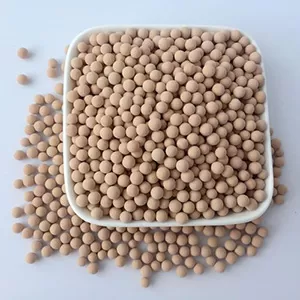The maximum temperature for atmospheric pressure activation regeneration of 3A molecular sieve is strictly limited to 300°C. This threshold is determined by the sieve’s aluminosilicate framework, which begins to degrade at higher temperatures, causing pore collapse and permanent loss of adsorption capacity.

Atmospheric pressure regeneration relies on dry, inert gas (like nitrogen) flowing through the 3A molecular sieve packing to carry away desorbed water. Sustained temperatures between 200–250°C are sufficient for most cases, as this range balances efficiency and structural preservation. Heating beyond 300°C risks altering the sieve’s crystalline structure, reducing its 3-angstrom pore uniformity—a critical feature for selective water adsorption.
The duration of heating also matters: even at 300°C, prolonged exposure (over 4 hours) can harm the molecular sieve. Industrial protocols often recommend gradual heating (50°C per hour) to avoid thermal stress, ensuring the sieve retains its physical integrity. Post-regeneration, cooling under dry conditions prevents re-adsorption of moisture, maintaining the sieve’s activity.
Adhering to this temperature limit ensures the 3A molecular sieve maintains 80–90% of its initial capacity after hundreds of cycles. This balance of regeneration efficiency and structural stability makes it reliable for long-term use in drying applications, from compressed air treatment to solvent purification.

